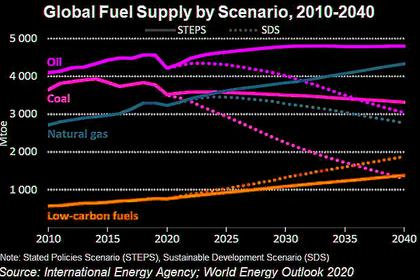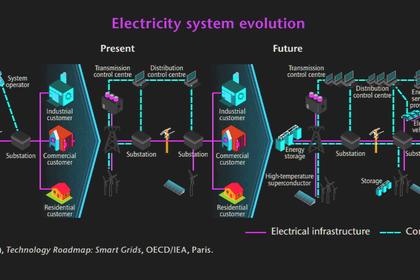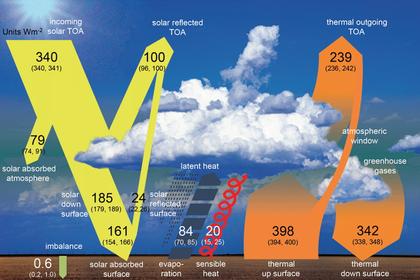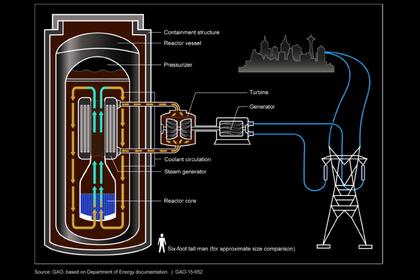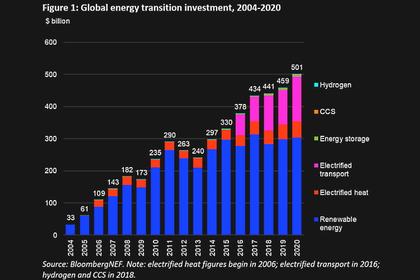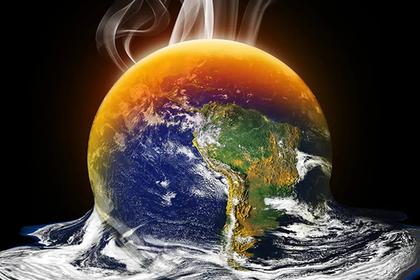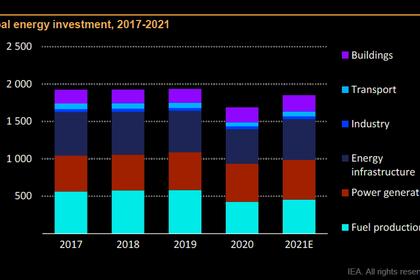
SOLVING THE PROBLEMS OF CONSUMER PROTECTION AND COMPETITION IN THE RENEWABLE ENERGY MARKET
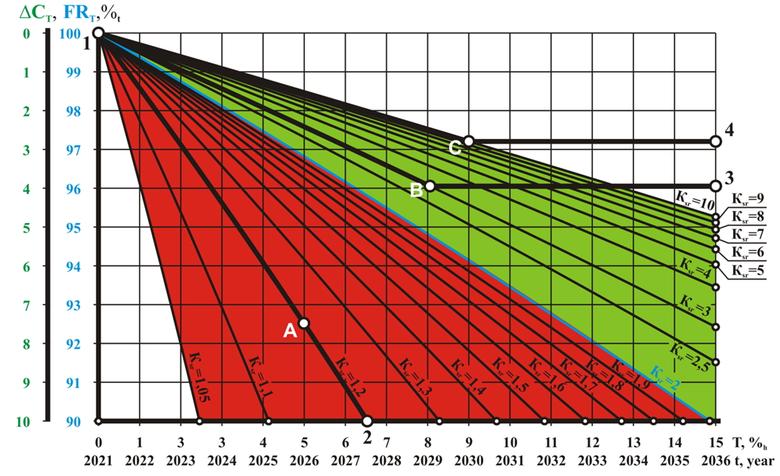
Introduction
All states - parties to the UNFCCC framework convention support the UNCTAD policy in the field of competition and consumer protection in all markets, including the market for renewable energy sources (hereinafter - RES). Each of them has its own legislation in this area, which is coordinated with UNCTAD.
However, we found obvious problems in this area, which contradict the UNCTAD policy and the laws of the states parties to the convention, but are not discussed or resolved by them. Some of these problems are briefly described below.
1. The problem of providing the consumer's right to be informed
The main need of mankind, for the satisfaction of which the participants of the UNFCCC framework convention create renewable energy sources, is its sustainable development and prevention of the predicted collapse of the economy.
The most important function of RES, which ensures the satisfaction of the basic needs of mankind in accordance with the framework convention, is the generation of energy instead of traditional energy sources (hereinafter TES). The participants in the framework convention argue that this replacement will provide that both current and future energy needs of humankind are met, stops the use of fossil carbon fuels and the emission of greenhouse gases from energy will end.
Obviously, this statement is related to meeting current public objectives in environmental protection. Therefore, it should be substantiated, or at least substantiatable and verifiable in accordance with the consumer's right to information (hereinafter - CRBI), which states:
“claims that relate to meeting current public objectives such as energy conservation, environmental protection or public health should be substantiated, or at least substantiatable and verifiable.” – p. 79 in Manual on Consumer Protection, UNCTAD, 2019.
No RES seller in the world provides such substantiation or information for verification at present. Moreover, the IEA reported that has no such justification:
«There is no simple rule for setting the right balance, which depends on national circumstances and is influenced by the level of economic development, the degree of market liberalization, the energy import dependency, existing track record in energy efficiency and renewable energy policies, and environmental and climate change commitments.» p. «ii» in Energy Charter Protocol on energy efficiency and related environmental aspects International Energy Agency 2005.
Consequently, all claims of RES sellers that its use will provide sustainable development for humanity and prevent the predicted collapse of the economy are unreliable. Moreover, our calculations [6] showed that about 60% of the total amount of renewable energy sources is not able to fully meet both the current and future needs of mankind in energy, stop using fossil carbon fuels and the emission of greenhouse gases from the energy sector.
But UNCTAD and the participants of the UNFCCC framework convention are not discussing or solving this problem.
2. The problem of the consumer's right to choose
There are many types of RES on the renewable energy market. Obviously, each of them has its own individual ability to satisfy the basic need described above, for the satisfaction of which it was created. The seller is obliged to provide the consumer with information on the magnitude of this ability for each RES in accordance with the consumer's right to choose. However, no RES seller in the world provides this information to the consumer.
Consequently, consumers around the world do not have the opportunity to choose RES based on their best ability to satisfy the basic need described above. But UNCTAD and the participants of the UNFCCC framework convention are not discussing or solving this problem.
3. The problem of consumer protection against fraudulent, deceitful or grossly misleading information, advertising, labelling or other such practices
The widespread provision by sellers of unreliable information to consumers (see problem 1), as well as refusal to provide them with information about the ability of the product to satisfy the basic need for which it was created (see problem 2) without any consequences indicates global absence indicates the global lack of protection for renewable energy consumers from fraudulent, deceptive or misleading information, advertising, labeling or other such practices. But UNCTAD and the participants of the UNFCCC framework convention are not discussing or solving this problem.
4. The problem of competition policy
The global inability of consumers to choose RES according to the best ability to satisfy the basic need (see problem 2) allows sellers not to increase this ability. This completely eliminated the competition between RES producers for achieving the maximum ability to satisfy the basic needs of humanity, for which RES were originally intended. The lack of competition in the most important parameter of the product is clearly contrary to the competition policy of UNCTAD and of the states parties to the UNFCCC convention. But they do not discuss or solve this problem.
5. Problem solving
5.1. Solution to problem 1. Providing the consumer's right to be informed
We proposed to use the energy self-reproduction coefficient (Ksr) of RES as a parameter to inform the consumer about his ability to satisfy the basic need. We proposed to calculate its value by the formula [4]:
Ksr = SGc /SLc (1)
There are:
SGc – the amount of energy produced by RES for the entire period of its operation;
SLc – the amount of energy spent on renewable energy sources for its entire life cycle.
For more details on Ksr see [1, 2, 3, 4, 5, 6].
The consumer will have the opportunity to make sure unequivocally by the value of Ksr that the use of this particular RES will satisfy the basic need for which it was created. We propose three versions of the rule for this which has an exact justification [6]:
RES is guaranteed to meet the basic needs of mankind, for the satisfaction of which it was created, if the value of its energy self-reproduction coefficient Ksr is equal to or greater than 2, i.e. if Ksr ≥ 2;
Or
RES is guaranteed to ensure sustainable development of mankind and prevent the predicted collapse of the economy, if the value of its energy self-reproduction coefficient Ksr is equal to or greater than 2, i.e. if Ksr ≥ 2;
Or
RES is guaranteed to provide satisfaction of both current and future needs of mankind in energy, stop the use of fossil carbon fuels and the emission of greenhouse gases from energy, if the value of its energy self-reproduction coefficient Ksr is equal to or greater than 2, i.e. if Ksr ≥ 2;
The consumer may equally successfully apply this rule for any RES (electric cars, wind turbines, photo panels, etc.), and projects based on them - energy supply systems for households, cities, countries, etc.
NOTE
If the value of Ksr is less than 2, i.e., Ksr < 2, then the use of this RES increases the increase in greenhouse gases in the atmosphere and accelerates the depletion of fossil fuel reserves. We recommend that UNCTAD and the UNFCCC member states prohibit the production of such RES. However, renewable energy sources already manufactured with Ksr < 2 should be used for their intended purpose up to the full depletion of their working resource. If the seller of renewable energy sources hides the value of Ksr, then we recommend the consumer to assume that its Ksr < 2 with a probability of 60%.
5.2. Solution to problem 2. Providing the consumer's right to choose
We propose to use the value of the energy self-reproduction coefficient (Ksr) of RES as a parameter that provides the consumer's right to choose according to its ability to satisfy the basic need for which it was created. Its use depends on the degree of readiness of renewable energy sources for intended use.
5.2.1. The rule for choosing renewable energy sources that are almost completely ready for use as intended after purchase
RES, which are almost completely ready for use as intended after purchase, we include electric cars, wind turbines, photo panels, etc. For them, we offer three variants of the rule for determining the degree of their ability to satisfy the basic need, which has a precise justification [6]:
The ability to satisfy the basic needs of mankind is higher for that RES, which has a large value of the coefficient of energy self-reproduction Ksr. Attention! RES, which have Ksr < 2, do not have this ability;
Or
Ability to provide sustainable development of humanity and prevent the predicted collapse of the economy is higher for that RES, which has a large value of the coefficient of energy self-reproduction Ksr. Attention! RES, which have Ksr < 2, do not have this ability;
Or
The ability to meet both current and future energy needs of humankind, to end the use of fossil carbon fuels and the emission of greenhouse gases from energy is higher for that RES, which has a large value of the coefficient of energy self-reproduction Ksr. Attention! RES, which have Ksr < 2, do not have this ability;
5.2.2. Method of choose investment projects based on renewable energy sources
RES-based investment projects include RES-based energy supply systems projects for households, cities, countries, continents and for the global energy transition to carbon neutrality, which will be implemented after choose.
To use this method, it is necessary to calculate the nomogram, which is shown in Fig. 1. It mathematically accurately links the value of the preserved reserves of fossil fuels, the increase in the concentration of greenhouse gases in the environment, the value of the average global coefficient of energy self-reproduction Ksr and the duration of the implementation of compared projects based on RES.
The nomogram in Fig. 1 is calculated on the assumption that all 100% of the global reserves of fossil fuels will be enough for humanity for 100 years, starting from 01/01/2022, if humanity:
- will leave the global energy industry “as is,” that is, it will not replace TES with RES;
- will constantly increase energy consumption exponentially from the current value to 100% in 100 years.
The energy industry will convert 100% of fossil fuel reserves into 100% of the increase in the content of greenhouse gases in the environment over these 100 years. And humanity will be left with a spoiled ecology without fossil fuels and energy. The plot of this transformation coincides with the blue line that separates the red and green areas on the nomogram.
However, humanity has the ability, at its choice, to accelerate, slow down and stop the process of depletion of reserves and environmental degradation described above by replacing TES with RES:
- If humanity uses renewable energy sources, which have a global average statistical value of Ksr < 2, then resource depletion and environmental degradation will accelerate. And humanity will sooner be left with a bad ecology, without fossil fuels and energy, than without replacing TES with RES. This can happen in 20 years or even earlier - see the graphs in the red area of the nomogram.
- If humanity uses renewable energy sources, which have a global average statistical value of Ksr ≥ 2, but does this for an infinitely long time, then the complete depletion of resources and the deterioration of the environment will slow down. But humanity will receive energy from renewable energy sources after the complete depletion of fossil fuel reserves, unlike the previous option. Its depletion can last 200 years or more. The duration of complete depletion will be the longer, the greater the value of Ksr - see the graphs in the green area of the nomogram.
- If humanity quickly replaces all TES with RES, which have a global average value of Ksr ≥ 2, then resource depletion and environmental degradation will stop at the moment of the last replacement. And humanity will remain with fossil fuels and energy - see points B and C in the green area of the nomogram.
For a detailed calculation of the nomogram, see [6].
Fig. 1. Nomogram for choosing a RES-based project according to its ability to meet the basic needs of mankind
Legend in Fig. 1:
Ksr – the global average statistical coefficient of energy self-reproduction of RES and projects based on it;
FR – global reserves of fossil fuels;
DC – the increase in the amount of greenhouse gases in the environment;
T – the relative duration of the project, as a percentage of the projected period of complete depletion of global fossil fuel reserves;
t – estimated time of project implementation, year.
The sequence of use of the nomogram is as follows:
For each investment project, determine the value of the coefficient of energy self-reproduction Ksr and the estimated time of the project implementation t, year, for example:
For each investment project, calculate the value of the coefficient of energy self-reproduction Ksr and the moment of completion of the project t, year, for example:
The investment project A KsrA = 1.2 and tA = 2026 year;
The investment project B KsrB = 3 and tB = 2029 year;
The investment project C KsrC = 10 and tC = 2030 year.
Then plot the completion points of these projects on the line with the corresponding Ksr values on the nomogram, for example, points A, B and C.
And, finally, use one of the proposed options for the rule for determining the degree of their ability to satisfy the basic need, which has an accurate justification [6], including:
RES-based project has a higher ability to meet the basic needs of humanity, if its completion point is located higher in the green area of the nomogram. Attention! Projects with completion points in the red area do not have this ability;
Or
RES-based project has a higher ability to provide sustainable development of humanity and prevent a predicted collapse, if its completion point is located higher in the green area of the nomogram. Attention! Projects with completion points in the red area do not have this ability;
Or
RES-based project has a higher ability to meet both the current and future energy needs of humankind, to stop the use of fossil carbon fuels and the emission of greenhouse gases from the energy sector, if its completion point is located higher in the green area of the nomogram. Attention! Projects with completion points in the red area do not have this ability;
Investment Project C has the highest ability to meet the basic need of humanity in accordance with this rule.
NOTE
Graphs of changes in global reserves of fossil fuels and an increase in greenhouse gas emissions in the environment for compared investment projects are shown with lines:
Investment project A schedule 1 - A - 2;
Investment project B schedule 1 - B - 3;
Investment project C (the best) schedule 1 - C - 4.
1.1.Solution to problem 3. Protecting the consumer against fraudulent, deceitful or grossly misleading information, advertising, labelling or other such practices
To protect the RES consumer against fraudulent, deceitful or grossly misleading information, advertising, labelling or other such practices, we recommend that UNCTAD and member countries of the UNFCCC framework convention extend this protection to the renewable energy market, including:
- take it into account in the UNFCCC framework convention;
- take it into account in the laws of the countries - participants of the UNFCCC convention;
- strictly control its implementation in practice.
1.2.Solution to problem 4. Increased competition in the RES ability to meet the basic needs of humanity
In our opinion, there are at least three ways to intensify competition in the ability of renewable energy sources to satisfy the basic needs of mankind.
The first way is private initiative.
Companies that are the first to supply renewable energy sources with an energy self-reproduction coefficient of Ksr ≥ 2 to the market will gain a competitive advantage. This will require little expense from them. Their advertising will explain to the consumer that it is these renewable energy sources that are guaranteed to provide sustainable development of mankind, as well as prevent the predicted collapse of the economy and climate. They will especially note that renewable energy sources with an unknown value of this coefficient are very likely to accelerate the approach of collapse, and their producers hide this from consumers.
The second way is the initiative of the states - participants of the UNFCCC framework convention.
States parties to the framework convention also compete in the renewable energy market. For example, the EU, in its European Green Deal, plans to transfer its energy to renewable energy sources earlier than other countries - participants of the convention, and then introduce duties on their goods. The rationale for the introduction of duties is the need to compensate the EU for its contribution to the preservation of the global climate. But in order to implement this plan, the EU must use only renewable energy sources with Ksr ≥ 2 in the transition to carbon neutrality, or prove that their energy efficiency does not matter. Otherwise, any state party to the UNFCCC framework convention has the opportunity to scientifically prove that the European Green Deal is based on inaccurate information about the environmental cleanliness of the renewable energy sources used. This means that the EU installs renewable energy sources that are manufactured using “environmentally dirty” technologies (see the red area of the nomogram), but claims that they are “environmentally friendly”. The introduction of EU duties in these conditions will not be sufficiently justified.
The third way is the UNCTAD initiative.
The problem of renewable energy competition in terms of its ability to satisfy the basic human need is global and urgent. Thus, UNCTAD has the opportunity to lead the development of a unified approach to its solution, for example, to amend the UNFCCC framework convention in accordance with it, to bring the laws of the participating countries in line with them and act in accordance with them. This will allow avoiding excessive politicization and unfair competition, which are dangerous with an irreversible negative impact on the environment.
Conclusion
We hope that UNCTAD and the States Parties to the UNFCCC Framework Convention are interested in solving the problems described above and will eliminate them as soon as possible. We are ready to provide maximum assistance in their elimination.
Sources of information
1. V.Matveev, Vl.Matveev Choosing the best systems based on Renewable Energy in Energy Transition process, 2020
2. V.Matveev, Vl.Matveev Energy Efficiency Criteria of a Renewable Energy System, 2020
3. V.Matveev, Vl.Matveev Calculation of the Energy Transition parameters when choosing Renewable Energy System according to economic criteria, 2020
4. V.Matveev, Vl.Matveev Energy Efficiency the RESs as a UNFCCC Process Tool, 2020
5. V.Matveev, Vl.Matveev Energy Transition Efficiency, 2020
6. V.Matveev, Vl.Matveev Method for choosing renewable energy source when transition to carbon neutral to provide sustainable development, 2021
Authors
Vladimir V. Matveev
Project director,
Mob. tel.: +79114524562 (Viber, WatsApp), e-mail: wwmatveev@gmail.com,
site: www.noologistics.ru
Valery V. Matveev
Deputy Project Director for R&D,
Mob. tel.: +48519792559 (WatsApp), e-mail: energy_logistics@mail.ru,
site: www.noologistics.ru
-----
Earlier:
